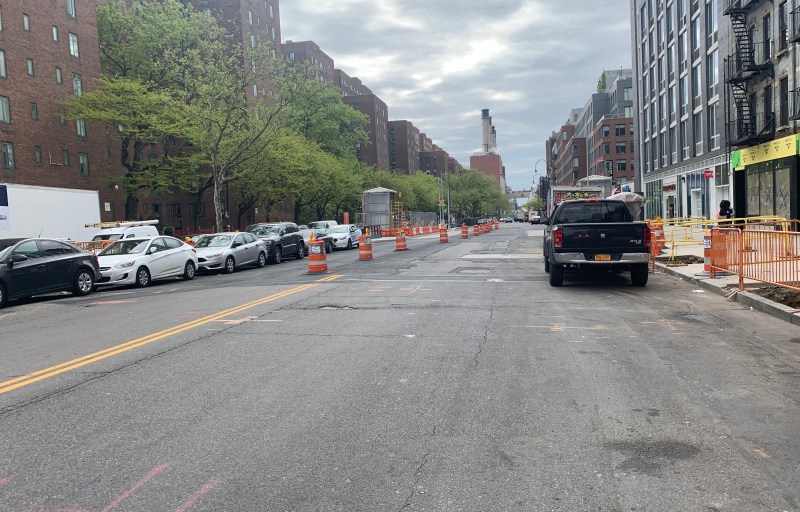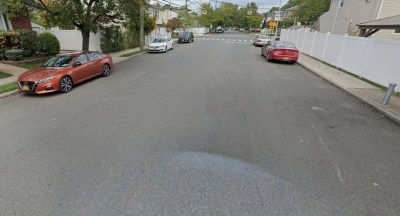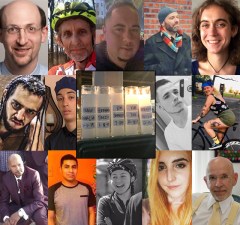UPDATED: Bicyclist Struck and Killed by Driver Backing Up on 14th Street

A 72-year-old cyclist was run over and killed by an SUV driver who was backing up into a parking space on E. 14th Street in Manhattan on Tuesday morning, police said.
Details are sketchy, but according to the NYPD, the cyclist was crossing 14th Street, north to south, between First Avenue and Avenue A at around 10 a.m. when the 33-year-old male driver of the massive 2019 Cadillac SUV, who was backing up, slammed into her.
The cyclist, whose name was not released, was taken to Bellevue Hospital, where she died. The driver remained on the scene and was not immediately charged.
The initial police report included some victim blaming, claiming that the cyclist was crossing 14th Street “mid-block,” but that portion of the roadway — on the southern end of Stuyvesant Town — features a service road that allows cars and cyclists to exit the service road onto 14th Street. There is no signage indicating that it is illegal to turn left out of that service road, which the cyclist may have been doing at the time of the crash.
The photo below shows it:

NYPD declined to comment.
The victim is the third cyclist to be killed this year.
Transportation Alternatives Executive Director Danny Harris put out the following statement after our initial posting of this story:
Large vehicles, like the Cadillac SUV involved in Tuesday’s crash, are disproportionately responsible for the deaths and serious injuries on our streets. Of the cyclists who died in 2019, 45 percent were killed by drivers operating trucks and SUVs. In 2020, all three of the cyclists killed to date were struck by drivers operating trucks or SUVs. There is an enormous responsibility that comes with operating a vehicle weighing two to three tons, especially in a city filled with people, especially older adults, children and those with limited abilities.
Despite the fact that traffic volumes have fallen by 80 to 90 percent in New York City, speed camera violations are up 83 percent since the “pause” went into effect and traffic deaths have fallen by only 13 percent compared to the previous five-year average. Last month, Families for Safe Streets called on Mayor de Blasio to ban non-essential driving in order to lower the baseline and expedite emergency response vehicles. Such a ban has yet to take effect, and New Yorkers are paying for it in deaths and injuries.
As New York fights and emerges from the pandemic, it will be up to the mayor to ensure that we do not return to a transportation system that puts vulnerable cyclists and pedestrians at the mercy of people driving multi-ton vehicles. We’re seeing the beginning of a transformation taking shape with the ambitious plan to create 100 miles of open streets for physical distancing-compliant movement. It’s a promising step, but in order to emerge stronger than before, we must demand a new paradigm in which streets across the five boroughs prioritize human life above motorized machines.



